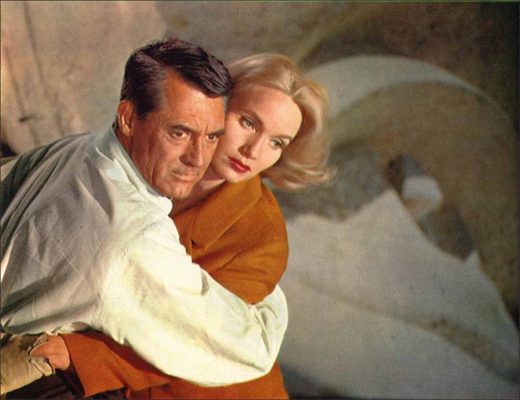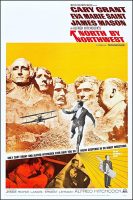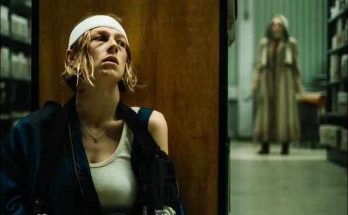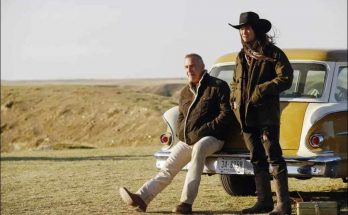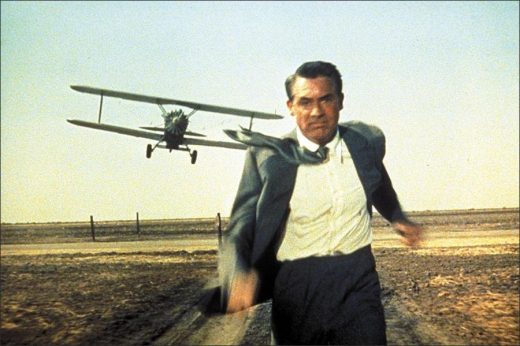
North by Northwest movie review. There is only one word we should not forget when evaluating classics and trend films (in general terms, old films): Pioneer. It is usually the first step we need to achieve the result. I’ll take it out later. And the ending point. So the result is the conclusion.
The distance of the “general audience” to the past is the distance between it and the pioneer. The priority given to the “embellished conclusion” detracts from the initial point from which the inference was drawn. This is exactly the reason for the distance between the regulars of espionage and thriller films and the films of Hitchcock, who wrote the book on these genres in cinema.
However, the ornamental pleasure of the vision is only temporary compared to the curiosity felt for the pioneer and the teachings of the pioneer. It is these films themselves that will break the prejudice in minds that the pioneer can be bad. For those who have a prejudiced approach to Hitchcock films, the movie North by Northwest will be a good start in overturning this judgment as it has all the characteristics of a Hitchcock movie.
We can define the basic formal features of Hitchcock films as a hero who becomes a criminal while continuing his daily routine, a seductive blonde, bad guys, and funny coincidental encounters. Screenwriter Ernest Lehman also creates a scenario that is quite suitable for the Hitchcock universe in terms of content: Espionage theme, love element and humor.
“Coincidence”, the most important feature in the plot of North by Northwest, is not only the starting point of the events, but also the reason for the intersubjective transformation and a tool to establish analogy in the continuity of the story. At the same time. The chain of coincidences that begins with Thornhill being mistakenly identified with Kaplan.
The knife being held by Thornhill in a way that creates a false perception during the murder at the United Nations building, continues with a fictionalized encounter with Kendall and the encounter at the dinner table on the train, which is fictionalized on the same axis (the last two examples are fictionalized to draw the image of coincidence). By doing so, it creates the analogy in the continuity of the story. What I mean by intersubjective transformation is the transformation of our hero into someone he is not, or does not want to be, sometimes by his own will and sometimes by influence from outside.
To better understand this transformation, let’s take a look at the characteristics of our character at the beginning of the film and the characteristics he gains towards the end of the film. At the beginning of the movie, he has a pathological narcissistic personality who loves himself to the point of sabotaging his relationships with other people and does not care about the other person’s/other’s wishes, needs and feelings.
At the end of the film, he turns into a superhero who expresses his emotional crisis with the frustration of being misled and puts himself in danger for the woman he is attracted to. Intersubjective transformation (identity transformation) caused personality trait transformation. Thornhill is “pretending to be something and actually becoming that thing.”
The situation of “becoming something by pretending to be something”, mentioned by Zizek in his book Looking Crooked, is also valid for Kendall – Thornhill love. For more clarity, let’s look at a scene from the movie Duck Soup that Zizek reminds us of in the book: “In this scene, Groucho defends his client in court by claiming that he is crazy: This man looks like a fool and acts like a fool – but don’t let this deceive you: He is really stupid!” If we adapt this situation to the movie, in the Kendall – Thornhill encounter, which is a fictionalized coincidence, Kendall and Thornhill seem to like each other and act like they do, but don’t let this mislead you, they really like each other.
Hitchcock also portrays love as a tool for salvation in his films. Although the love element that shapes the side narrative is predominantly a feeling of pleasure in Hitchcock films, it turns into the greatest struggle of the heroes for their salvation in the moments when they are trapped. We can also say that the way to achieve happiness / peace is through pleasure.
We can discuss the movie North by Northwest in four parts: Escape from the plane in the cornfield, auction hall, escape at Mount Rushmore and the finale. The fixed frame overhead wide shot at the beginning of the escape sequence from the plane in the wide open field in the cornfield is the forerunner of the general structure of many films.
In the continuation of the sequence, Hitchcock raises the feeling of tension to the highest possible level by staying in an open area against the moves of the plane, and makes the audience let out a single cry of surprise: Amazing! In the auction hall, before you is a pioneering film with dialogues in which screenwriter Ernest Lehman amplifies the humor with simple sentences, a flawless chase on Mount Rushmore, and a clever finale that cuts from the edge of the cliff to the compartment with a sudden cut.
All about North by Northwest movie.
North By Northwest (1959)
Directed by: Alfred Hitchcock
Starring: Cary Grant, Eva Marie Saint, James Mason, Jessie Royce Landis, Leo G. Carroll, Josephine Hutchinson, Philip Ober, Martin Landau, Adam Williams, Edward Platt, Robert Ellenstein
Screenplay by: Ernest Lehman
Production Design by: Robert F. Boyle
Cinematography by: Robert Burks
Film Editing by: George Tomasini
Set Decoration by: Henry Grace, Frank R. McKelvy
Art Direction by: William A. Horning, Merrill Pye
Music by: Bernard Herrmann
Distributed by: Metro-Goldwyn-Mayer
Release Date: July 28, 1959
Visits: 152
